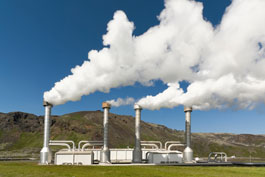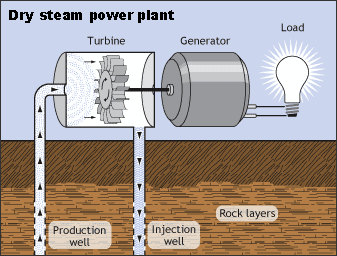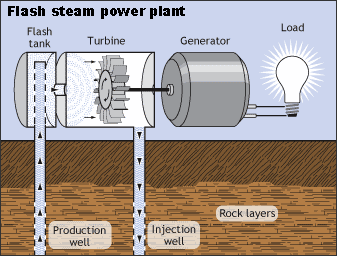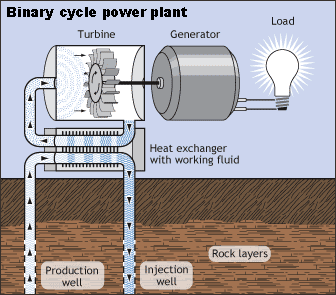Geothermal power plants use hydrothermal resources that have both water (hydro) and heat (thermal). Geothermal power plants require high-temperature hydrothermal resources—300 degrees Fahrenheit (°F) to 700° F—that come from either dry steam wells or from hot water wells. We use these resources by drilling wells into the earth and then piping steam or hot water to the surface. The hot water or steam powers a turbine that generates electricity. Some geothermal wells are as much as 2 miles deep.
There are three basic types of geothermal power plants:
- Dry steam plants use steam directly from a geothermal reservoir to turn generator turbines. The first geothermal power plant was built in 1904 in Tuscany, Italy, where natural steam erupted from the earth.
- Flash steam plants take high-pressure hot water from deep inside the earth and convert it to steam that drives generator turbines. When the steam cools, it condenses to water and is injected back into the ground to be used again. Most geothermal power plants are flash steam plants.
- Binary-cycle power plants transfer the heat from geothermal hot water to another liquid. The heat causes the second liquid to turn to steam, and the steam drives a generator turbine.
Last updated: December 21, 2022




